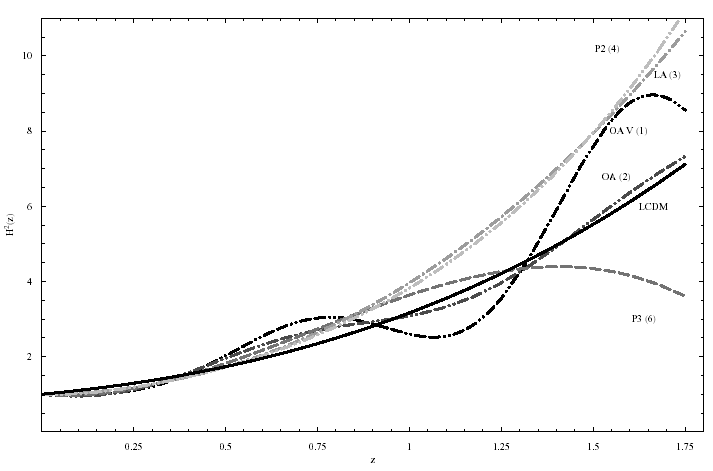Evidence for Cosmological
Oscillations in the Gold SnIa Dataset
- R. Lazkoz1, S. Nesseris2 and
L. Perivolaropoulos 2
- 1Fisika Teorikoa, Zientzia eta Teknologiaren Fakultatea, Euskal Herriko
Unibertsitatea, 644 Posta Kutxatila, 48080 Bilbao, Spain
2Department of Physics, University of Ioannina, Greece
Abstract
We use the SnIa Gold dataset to compare LCDM with 10
representative parametrizations of the recent Hubble expansion
history H(z). For the comparison we use two statistical tests;
the usual χ
min2
which is insensitive to the
parametrization number of parameters and a statistic we call the
p-test which depends on both the value of
χmin2
and the
number n of the parametrization parameters. The p-test measures
the confidence level to which the parameter values corresponding
to LCDM are excluded from the viewpoint of the parametrization
tested. For example, for a linear equation of state
parametrization w(z)=w0 + w1 z the LCDM parameter values
(w0=-1, $w1=0$) are excluded at 75% confidence level. We use
a flat prior and Ω0m=0.3. All parametrizations tested
are consistent with the Gold dataset at their best fit. According
to both statistical tests, the worst fits among the 10
parametrizations, correspond to the Chaplygin gas, the Brane
World and the Cardassian parametrizations. The best fit is
achieved by oscillating parametrizations which can exclude the
parameter values corresponding to LCDM at 85% confidence level.
Even though this level of significance does not by itself
constitute conclusive evidence for oscillations in the
cosmological expansion, when combined with similar independent
recent evidence for oscillations coming from the CMB and matter
power spectra it becomes an issue worth of further investigation.
The best fit Hubble Expansion History H(z) for various
cosmological models
(the number in parenthesis indicates
the rank of the model 1-10 )

Numerical Analysis
The file goldfit-math.zip contains the mathematica file used for
the numerical analysis of the paper along with the gold dataset. It produces the
figures of the paper and contains useful comments. It is based on routines from
the numerical recipes. The results have been tested using also Mathematica
routines (not included in the file).
Use Mathematica 4.0 or 4.1.
Download
the mathematica file for data analysis and the 157 SnIa data file

